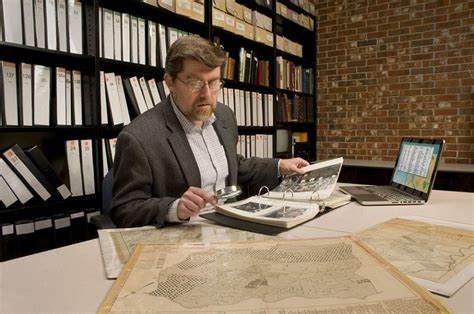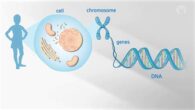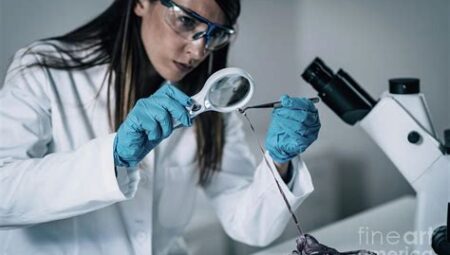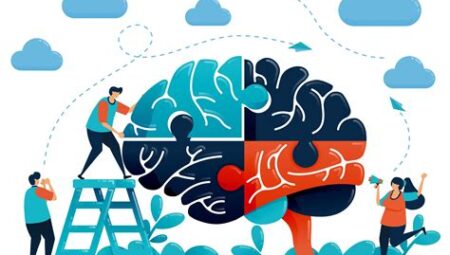Preserving Cultural Retrospect: Becoming a Museum Archivist
As our world continues to evolve, it becomes increasingly important to preserve and protect the artifacts and cultural heritage that tell the story of our past. This is where the role of a museum archivist comes into play. Museum archivists play a crucial role in acquiring, preserving, and maintaining cultural artifacts for future generations to appreciate and learn from. In this blog post, we will explore the various aspects of becoming a museum archivist, from understanding the responsibilities of the role to acquiring the specialized skills and knowledge needed to preserve cultural artifacts. We will also delve into the different archiving techniques and systems used in museums, as well as the importance of digital collections in preserving fragile items. Additionally, we will discuss the collaborative nature of the job, as museum archivists work with diverse professionals in the field to ensure the proper conservation and public access of cultural artifacts. Join us as we embark on this journey into the world of museum archiving and cultural preservation.
Table of Contents
Understanding the role of a museum archivist
As a museum archivist, it is crucial to have a deep understanding of the role you play in preserving cultural artifacts for future generations. Your responsibilities go far beyond simply storing and cataloging items – you are the guardian of history, ensuring that each piece is carefully maintained and accessible to the public.
Archivists are tasked with organizing and maintaining collections, from ancient manuscripts to modern digital records. This requires a keen eye for detail and a strong sense of professionalism in handling valuable items that cannot be replaced if damaged or lost.
In addition to the practical aspects of preservation, archivists must also be knowledgeable in conservation techniques in order to prevent deterioration of fragile items. This often involves collaborating with diverse professionals in the field, such as conservators and scientists, to implement measures that will protect the artifacts for centuries to come.
Overall, the role of a museum archivist is multi-faceted, requiring a combination of specialized skills, a passion for cultural preservation, and a deep understanding of the historical significance of the items in their care.
Acquiring knowledge in cultural preservation
Acquiring knowledge in cultural preservation is essential for anyone working in the field of museum archiving. It involves gaining a deep understanding of the history, significance, and value of cultural artifacts, as well as the methods and techniques used to preserve them.
Professionals in this field must be well-versed in the various materials and technologies used in cultural preservation, including proper handling, storage, and display of artifacts to ensure their longevity.
Furthermore, acquiring knowledge in cultural preservation also entails staying updated on the latest research and developments in the field, as well as collaborating with experts and peers to exchange valuable insights and best practices.
Ultimately, acquiring knowledge in cultural preservation is a continuous process of learning and adaptation to ensure the protection and longevity of our rich cultural heritage for future generations.
Exploring different museum archiving techniques
When it comes to preserving cultural artifacts in museums, there are various techniques that archivists utilize to ensure the longevity of these valuable items. One of the most common methods is through proper storage and handling. This involves using archival-quality materials such as acid-free folders and boxes to prevent deterioration. Additionally, proper handling techniques are crucial to avoid damage to fragile items.
Another important archiving technique is documentation. Archivists meticulously record information about each item, including its history, condition, and any conservation treatments it has undergone. This documentation serves as a valuable resource for researchers and other museum professionals.
Digitization is another increasingly popular archiving technique. Museums are digitizing their collections to make them accessible to a wider audience and to preserve items that may be too fragile for display. This often involves high-resolution imaging and detailed metadata to accurately represent the artifact.
Conservation treatments are also a crucial aspect of museum archiving. Archivists work with conservators to address any damage or deterioration in artifacts, using specialized techniques to stabilize and preserve them for future generations.
Developing specialized skills in artifact preservation
Developing specialized skills in artifact preservation is crucial for professionals working in the field of museum archiving. It involves acquiring in-depth knowledge of various materials and techniques used in preserving cultural artifacts.
Specialized skills in artifact preservation also require a deep understanding of the potential risks and deterioration factors that can affect different types of artifacts. This includes knowledge of environmental factors, such as temperature, humidity, and light exposure, as well as the use of specialized equipment and materials for conservation.
Professionals in this field must continually update their knowledge and skills through ongoing training and education to stay current with the latest advancements in artifact preservation techniques and technologies.
Developing specialized skills in artifact preservation also involves collaborating with other experts in the field, such as conservators, scientists, and researchers, to ensure that the best practices are implemented in the preservation of cultural artifacts.
Creating comprehensive archival systems
When it comes to creating comprehensive archival systems, museum archivists play a crucial role in preserving cultural artifacts for future generations. These professionals are responsible for developing and implementing the necessary infrastructure to ensure that historical items are properly organized, stored, and accessible to the public.
One of the key components of comprehensive archival systems is the careful documentation of each artifact, including its origins, significance, and condition. This information is essential for researchers, historians, and museum staff to understand the cultural context of the items in their collection.
In addition to physical documentation, digital archival systems are becoming increasingly important in the field of artifact preservation. Museum archivists must stay up to date with the latest technology to create digital archives that are secure, easily accessible, and capable of preserving a wide variety of multimedia formats.
Creating comprehensive archival systems also involves working closely with other museum professionals such as conservators, curators, and educators to ensure that the artifacts are properly cared for and integrated into educational programs and exhibitions. This collaborative approach is essential for maintaining the cultural integrity of the museum’s collection.
Managing digital collections for cultural artifacts
Managing digital collections for cultural artifacts involves the organization, preservation, and accessibility of valuable cultural materials in digital form. Digital collections can encompass a wide range of items, including photographs, documents, audio recordings, videos, and other digital artifacts that hold significant cultural importance.
One of the key aspects of managing digital collections is the implementation of digital preservation techniques to ensure the long-term viability and accessibility of digital materials. This may involve digitizing physical artifacts, establishing regular backups, and utilizing metadata to provide descriptive information about the digital objects.
Moreover, managing digital collections for cultural artifacts requires the development of comprehensive databases and cataloging systems to facilitate easy search and retrieval of digital materials. The use of standardized metadata schemas and controlled vocabularies is essential in ensuring that the digital collections are well-organized and easily navigable.
Additionally, data security and access control are important considerations in managing digital collections. Implementing robust security measures and access controls helps in safeguarding the digital materials from unauthorized access and potential data breaches, while also ensuring that they are accessible to the intended users.
Ensuring proper conservation of fragile items
Proper conservation of fragile items is essential in preserving cultural artifacts for future generations. Fragile items can include delicate textiles, historic documents, and delicate artworks that require special care to prevent deterioration. It is crucial for museum archivists to implement specific preservation techniques to ensure the longevity of these delicate items.
One important aspect of ensuring proper conservation of fragile items is environmental control. This involves maintaining stable temperature and humidity levels to prevent damage caused by fluctuations in these conditions. By closely monitoring and regulating the museum environment, archivists can minimize the risk of deterioration for fragile items.
Handling and storage are also key factors in the conservation of delicate artifacts. Museum archivists must use proper handling techniques to minimize physical damage, such as tears, creases, or abrasions. Additionally, specialized storage materials and methods, such as acid-free paper, protective cases, and climate-controlled storage units, are necessary to prevent deterioration and damage over time.
Collaboration with conservation professionals is important in ensuring proper conservation of fragile items. Conservation experts can provide valuable insight and expertise in treating delicate artifacts, conducting specialized treatments, and advising on proper storage and display methods to ensure the long-term preservation of fragile items.
Implementing preventive measures against deterioration
When it comes to artifact preservation, one of the most important aspects is implementing preventive measures against deterioration. This involves creating a comprehensive archival system that not only catalogues and stores cultural artifacts but also actively works to protect them from damage over time.
By carefully monitoring environmental conditions such as light, temperature, and humidity, museum archivists can proactively identify potential risks to the items in their care and take steps to mitigate them. For example, controlling the amount of light exposure can prevent fading and discoloration, while maintaining stable temperature and humidity levels can prevent mold and moisture damage.
Collaborating with diverse professionals in the field is also crucial for successful preventive measures. Conservationists, scientists, and preservation experts can provide valuable insights and expertise to help identify potential risks and develop strategies for protecting cultural artifacts.
Overall, the proactive approach to artifact preservation through implementing preventive measures against deterioration is essential for ensuring the long-term survival of cultural heritage for future generations to enjoy.
Collaborating with diverse professionals in the field
Collaborating with diverse professionals in the field of museum archiving is crucial for the successful preservation of cultural artifacts. It involves working closely with historians, conservationists, digital archivists, archaeologists, and other experts to ensure that the artifacts are properly documented, stored, and protected.
Effective collaboration requires clear communication, mutual respect, and a shared commitment to preserving our cultural heritage. It also involves tapping into the unique expertise of each professional to address specific challenges in artifact preservation.
By working with a diverse range of professionals, museum archivists can gain valuable insights, exchange knowledge, and stay updated on the latest preservation techniques. This collaboration not only enhances the quality of archival systems but also fosters innovation and continuous improvement in the field.
Furthermore, collaborating with diverse professionals allows for the development of comprehensive conservation strategies that take into account different perspectives and approaches. It also promotes a holistic approach to cultural preservation, ensuring that the artifacts are safeguarded for future generations.
Promoting public access to archived cultural artifacts
One of the most important aspects of museum archiving is promoting public access to the archived cultural artifacts. It is essential to make these valuable items available for the public to view and appreciate. Through various outreach programs and exhibitions, museums can engage with the community and showcase the cultural richness found within their archives.
In addition to physical exhibitions, digital platforms play a crucial role in promoting public access to archived cultural artifacts. By digitizing collections and making them available online, museums can reach a much wider audience. This not only allows for greater accessibility but also serves as a means of preservation by reducing the handling of fragile items.
Collaborating with educational institutions, libraries, and other organizations can also contribute to the promotion of public access to archived cultural artifacts. By lending items for research or educational purposes, museums can extend their reach and impact, fostering a deeper understanding and appreciation for cultural heritage.
Furthermore, hosting events such as workshops, lectures, and guided tours can provide the public with valuable insights into the significance of archived cultural artifacts. These initiatives not only promote access but also encourage active participation and dialogue, enriching the overall experience for visitors.






